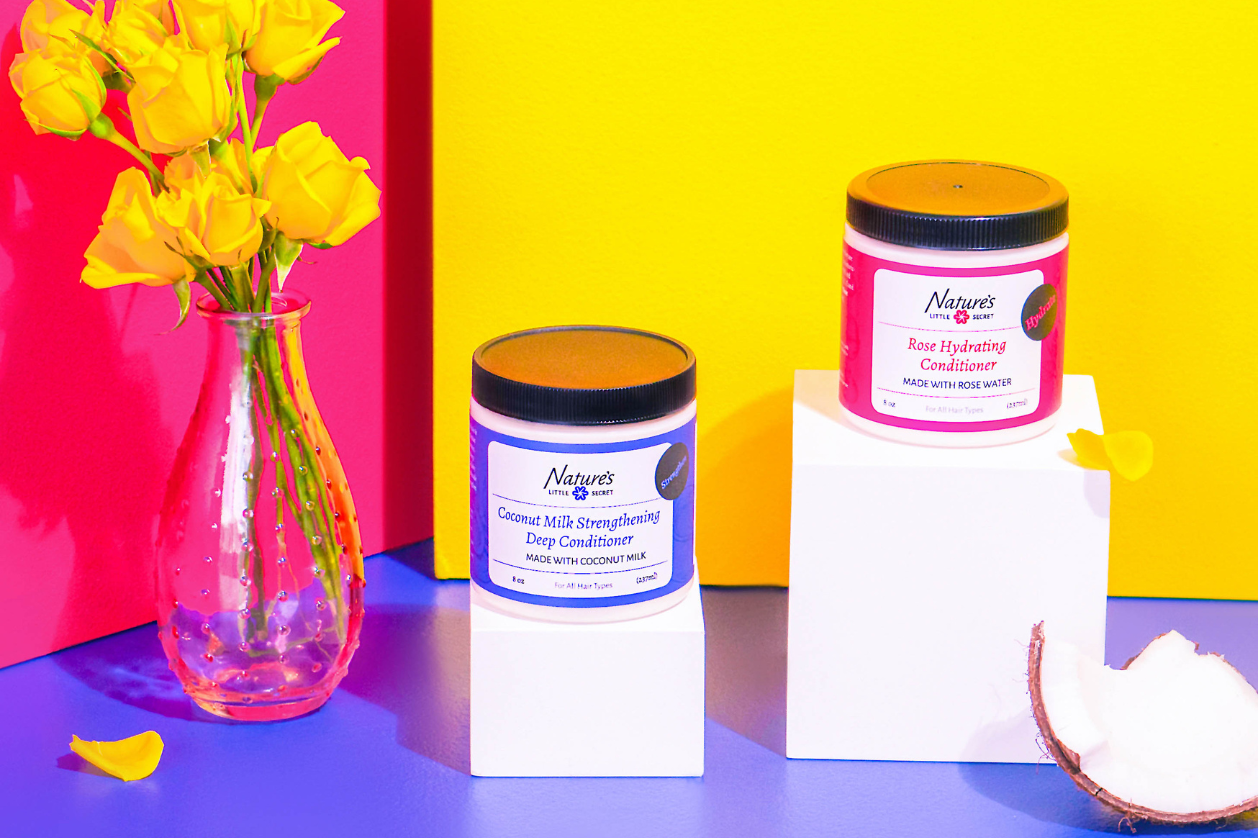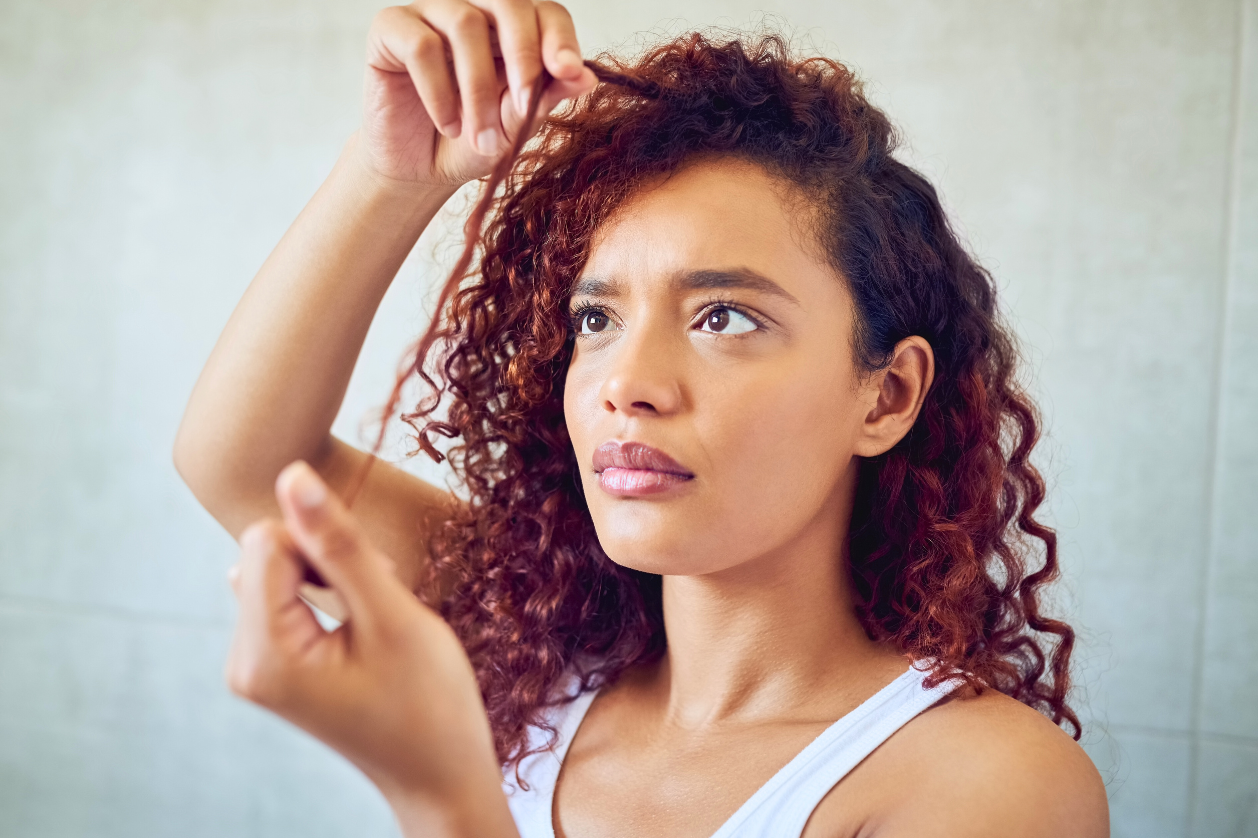Hair Porosity Explained: Low, Normal & High Porosity Truths

Tired of all the porosity confusion? So are we. This guide clears up what porosity really is, how to tell your type, and how to care for your hair the smart way.
Let’s Be Real for a Second.
There’s a lot of misinformation out there about hair porosity—“float tests,” one-size-fits-all routines, and advice that leaves your hair confused and dry.
At Nature’s Little Secret, we’re not here for that. We’re here to drop real facts, backed by science and experience—so you can stop guessing and start giving your hair what it actually needs.
Whether your hair is low, normal, or high porosity (or you’re not sure yet), this guide will help you understand the difference—and build a routine that actually works.
What Is Hair Porosity—Really?
Hair porosity is your hair’s ability to absorb and retain moisture. It’s determined by the condition of the cuticle layer—the outermost part of your hair strand made up of overlapping cells, like shingles on a roof.
This layer controls how easily water and ingredients move in and out of the hair. While porosity is often grouped into low, normal, , and high, it's important to know:
Porosity exists on a spectrum. Labels like “low” or “high” are helpful for understanding your hair, but porosity isn’t a permanent type—it can shift due to:
- Heat or chemical damage
- Product buildup
- Over-manipulation
- Hard water exposure
- Environmental stress
Understanding your hair’s porosity helps you choose better products and techniques—not just follow trends.
Low Porosity Hair
What It Means:
Low porosity hair has a tightly closed cuticle layer, which makes it difficult for water and products to enter the hair shaft. While it retains moisture well once hydrated, it often struggles to absorb moisture in the first place.
However, here's a common myth-buster: you might not actually have low porosity hair—your hair could just be coated with product buildup. Clarifying regularly is essential before assuming your porosity level.
Signs of Low Porosity Hair:
- Water beads up or takes a long time to absorb
- Hair takes a long time to dry
- Products tend to sit on top of the hair
- Prone to buildup and dullness
✅ What Helps:
- Clarify 1–2 times a month to remove buildup that blocks moisture
- Deep condition with steam or gentle heat to help lift the cuticle
- Use lightweight, water-based products that absorb more easily
- Look for humectants that draw moisture into the hair, such as glycerin, aloe vera, sodium PCA, propylene glycol, or honey/agave nectar
- Apply products to damp (not soaking wet) or warm hair for better penetration
💡 Note: Humectants are most effective in moderate to high humidity. In drier climates, pair them with a lightweight sealant to prevent moisture loss.
💡 Avoid heavy oils and butters that can block moisture from entering.
Normal Porosity Hair
What It Means:
Normal (or medium) porosity hair has a slightly lifted cuticle that allows for balanced moisture absorption and retention. It responds well to most products and styling techniques.
Signs of Normal Porosity Hair:
- Hair absorbs moisture well and dries at a moderate rate
- Styles last without much effort
- Hair feels soft and elastic
- Not overly frizzy or dry unless damaged
✅ What Helps:
- Maintain a simple routine with hydration and light protein when needed
- Use moisturizing shampoos and nutrient-rich conditioners
- Avoid overloading with heavy oils or unnecessary treatments
- Pay attention to any shifts—coloring or heat tools can push hair toward high porosity
💡 Consistency is key. Normal porosity doesn’t need a lot of adjusting—just care.
High Porosity Hair
What It Means:
High porosity hair has raised or damaged cuticles that allow moisture in easily—but also let it escape just as fast. It may be genetic or caused by damage from heat, bleach, over-manipulation, or chemical treatments.
Signs of High Porosity Hair:
- Hair absorbs water quickly and dries fast
- Frizzes easily and tangles often
- Feels dry, rough, or brittle even after moisturizing
- Lacks definition or struggles to retain styles
✅ What Helps:
- Use heavier moisturizers and sealants to lock in hydration
- Layer products using the LCO or LOC method (Leave-In, Cream, Oil)
- Incorporate protein treatments to temporarily strengthen the cuticle
- Choose ingredients that help reduce moisture loss, such as hair butters, avocado oil, sunflower oil, and hydrolyzed proteins like silk, quinoa, or keratin
- Cleanse with gentle shampoos
💡 Protein treatments can help fill gaps in the cuticle structure—but their effects are temporary and should be balanced with moisture.
💡 Frequent moisturizing and sealing are key—but so is consistent, gentle cleansing to keep the scalp healthy and prevent buildup.
But Is the “Float Test” Accurate?
You may have seen the popular “float test,” where a hair strand is dropped into a cup of water to see if it sinks (high porosity) or floats (low porosity).
🚫 Unfortunately, this test isn’t scientifically reliable.
It can be affected by:
- Product residue
- Surface tension
- The hair’s width or density
✅ Better approach?
Watch how your hair behaves in real life:
- Does it dry quickly or slowly?
- Do products absorb or just sit on top?
- How long does moisture last before your hair feels dry again?
Porosity Isn’t Everything—But It Matters
Porosity is one important piece of the puzzle, but not the whole picture. Your hair’s density, strand thickness, scalp health, and protein-moisture balance all influence how it behaves.
You might even have multiple porosity levels on one head—like colored or heat-damaged ends and untreated roots. The real goal isn’t to label your hair—it’s to learn what it needs and how to respond with the right care.
Final Thoughts: Learn Your Hair. Feed It What It Needs.
Understanding your porosity gives you the power to pick better products, avoid wasted wash days, and finally get results that last. Whether your hair is low, normal, or high porosity—your hair wants the same thing: moisture that works.
At Nature’s Little Secret, we craft plant-based, moisture-rich formulas that support your hair’s unique needs—without the harsh additives or guesswork. No fluff. Just real results.
Explore our collection of clean, effective products and find your perfect match—no matter your porosity.



